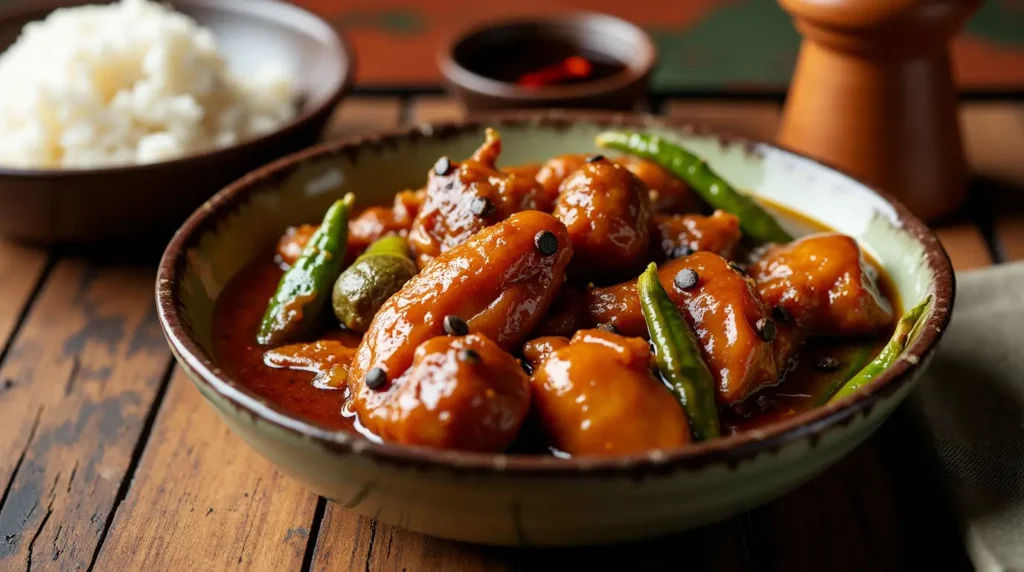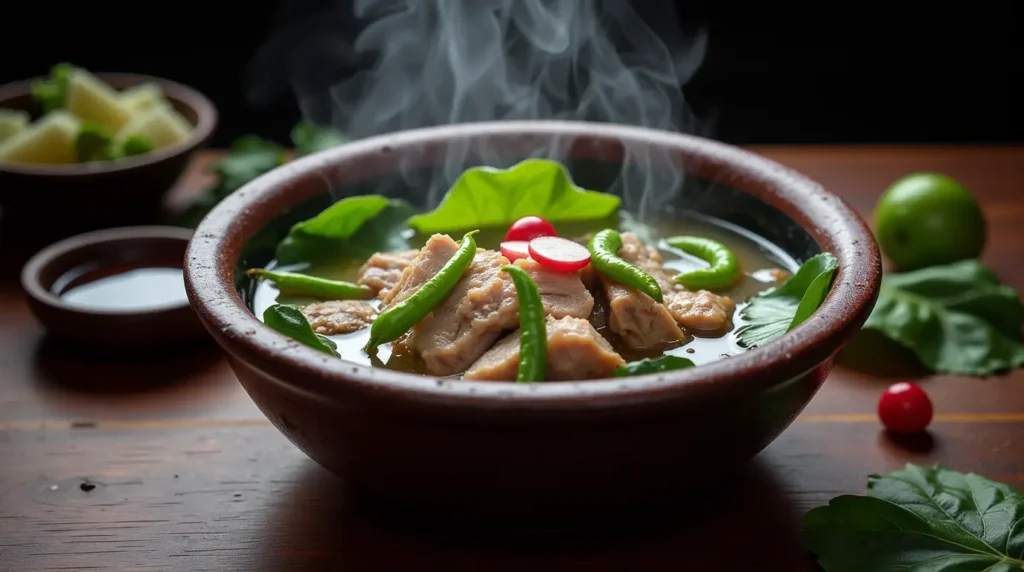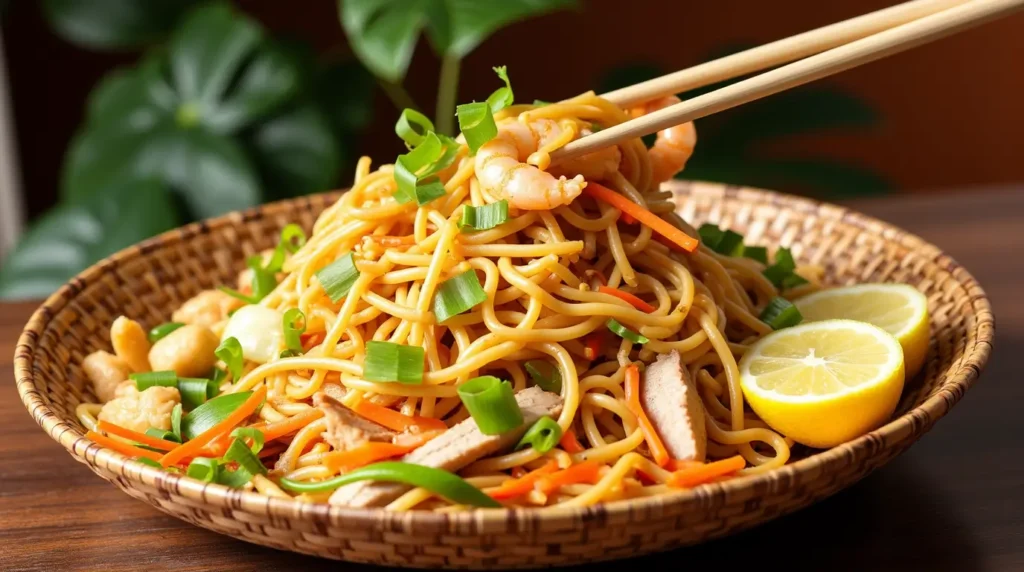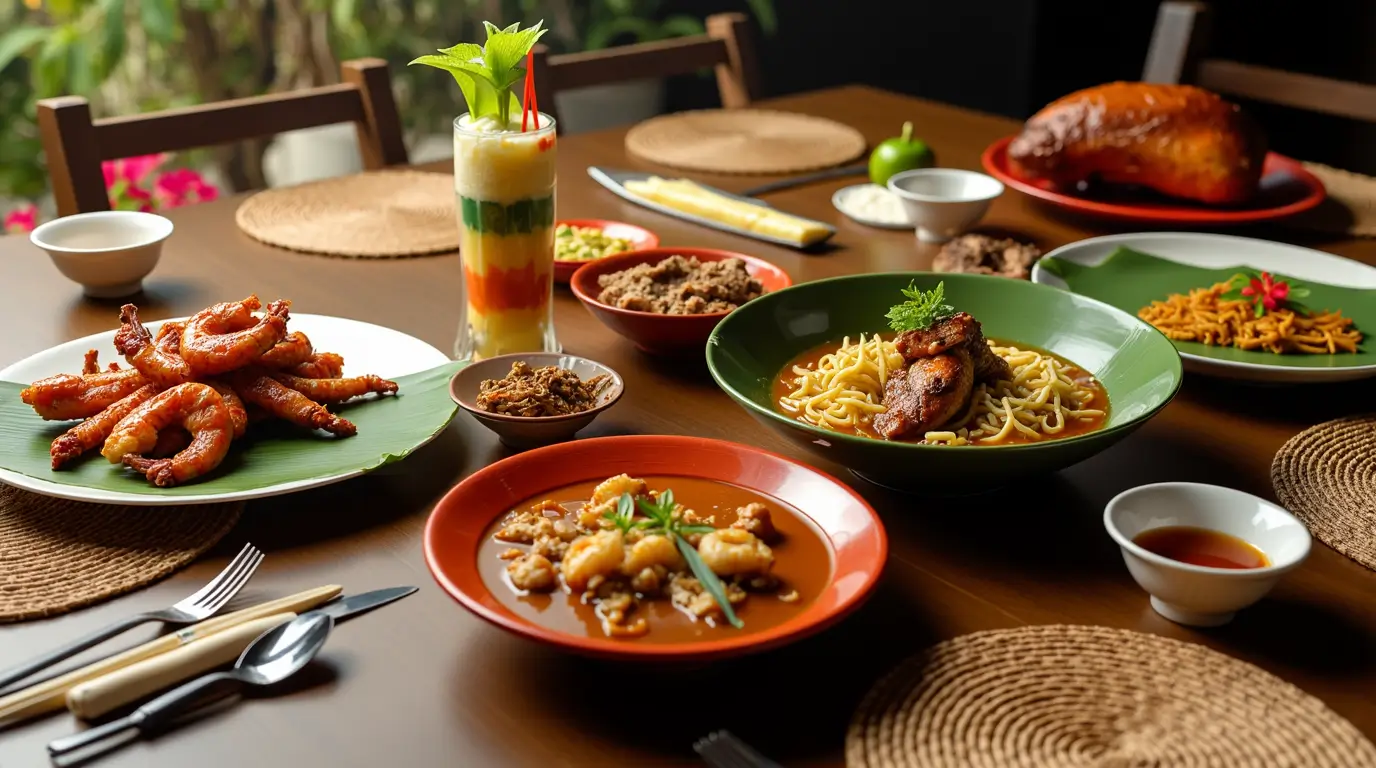Table of Contents
Table of Contents
Filipino cuisine is a vibrant tapestry of flavors, aromas, and culinary techniques that has evolved over centuries of historical influences, trade interactions, and regional adaptations. It is a gastronomy that stands at the crossroads of indigenous traditions and foreign inspirations, making it one of the most unique food cultures in Southeast Asia. From hearty soups and stews to grilled meats, sweet desserts, and zesty condiments, Filipino cuisine offers an adventure for the senses, enticing travelers and food enthusiasts alike to explore its rich variety of dishes. In this article, we will dive deep into the culinary context and history of Filipino cuisine, discover its key ingredients, explore must-try traditional dishes, and learn about modern trends that continue to shape its evolution. By delving into age-old recipes, table rituals, and contemporary interpretations, you will gain insight into why Filipino cuisine is beloved both at home and abroad—and why it might just become your new favorite culinary discovery.
Introduction
Set against the backdrop of more than 7,000 islands, Filipino cuisine reflects the Philippines’ diverse landscapes, cultural influences, and local customs. At its core, the cuisine showcases the resourcefulness and ingenuity of Filipino cooks who have learned to incorporate every available ingredient—from the highland-grown rice in mountainous regions to the abundant seafood harvested from the surrounding seas. With a mixture of sweet, sour, salty, and savory notes, many Filipino dishes are bold in flavor yet comforting in appeal.
Since the Philippines was a hub for trade and cultural exchange for centuries, it has absorbed and integrated techniques and ingredients from various regions, including neighboring Asian countries, Spain, and the United States. The result is a distinctive food identity that seamlessly merges influences into a cohesive whole. Filipino cuisine continues to evolve, as younger chefs innovate traditional recipes and fuse them with global flavors, all the while maintaining a strong sense of cultural pride.
In the sections that follow, we will journey through the remarkable story of Filipino cuisine—tracing its origins, identifying major historical periods that influenced local gastronomy, and spotlighting the ingredients and dishes that define the archipelago’s culinary identity. By the end of this article, you will have a deeper appreciation for the rich tapestry that is Filipino cuisine and be equipped with ideas on how to recreate these dishes in your own kitchen.
Culinary Context and History
Indigenous Roots and Pre-Colonial Influences
Before the arrival of foreign powers, the culinary traditions of the islands that now make up the Philippines were already well-developed. Indigenous tribes cultivated root crops, grains, and vegetables, depending on the geographical and climatic conditions of their specific regions. Livestock such as pigs, chickens, and water buffalo (carabao) were common, and fresh fish and shellfish were abundant due to the archipelago’s extensive coastlines. Cooking methods often involved roasting, steaming, and boiling, and local ingredients like taro, cassava, coconut, and tropical fruits contributed significantly to daily meals.
Another essential feature of early Filipino cuisine was the role of natural fermentation and preservation. A technique called burong—the fermentation of rice, fish, or vegetables—helped early inhabitants survive lean seasons. Vinegar, derived primarily from palm or sugarcane, served as both a flavor enhancer and a means of preserving food in a hot, humid climate. Even today, sourness is a distinct element in many Filipino dishes, a nod to these pre-colonial preservation practices.
The Spanish Colonial Era (16th to 19th Century)
The Spanish arrived in the 16th century and ruled the archipelago for more than 300 years, leaving an indelible mark on local culture and introducing several dishes and cooking methods that shaped Filipino cuisine. Under Spanish influence, bread-making techniques were introduced, leading to an array of local breads and pastries that remain popular. Ingredients like olive oil, onions, and tomatoes became more commonplace, and dishes such as caldereta (a tomato-based meat stew) reflect this Iberian heritage.
Christianity, introduced by the Spanish, also played a role in shaping Filipino food culture. Various religious celebrations and festivals called for elaborate feasts, encouraging the refinement and adaptation of local dishes. The Spanish brought in new crops such as potatoes, corn, and cacao, which further enriched the local gastronomic scene. Over time, a fusion of indigenous flavors and Spanish techniques gave rise to enduring Filipino favorites, including lechon (roast pig) and afritada (a tomato-based stew with chicken or pork).
Chinese and Other Asian Influences
Even before the Spanish arrived, trade with Chinese merchants brought noodles, soy sauce, and various stir-fry techniques to Philippine shores. Chinese culinary influence is evident in many Filipino dishes, such as pancit (stir-fried noodles) and lumpia (spring rolls). These quickly became beloved staples, appearing at celebrations and everyday meals alike. The Chinese concept of balancing ingredients also resonated with the Filipino penchant for mixing sweet, sour, and salty flavors.
Other Asian neighbors contributed as well—Indian traders, for instance, introduced spices like turmeric and cumin, which found their way into regional specialties. Similarly, Malay and Indonesian influences added dishes that employed coconut milk and chili-based sauces. Over the centuries, this ongoing intermingling of culinary approaches helped to mold a multifaceted and ever-expanding Filipino cuisine.
American Occupation and Modern Influences
In the late 19th century and early 20th century, the American presence introduced a variety of new ingredients and food products, from canned goods and hot dogs to fast food chains in more contemporary times. Although some feared these influences would overshadow traditional Filipino cuisine, local cooks skillfully adapted new ingredients. An example of this adaptation is the popularity of dishes like SPAM fried rice, reflecting the assimilation of American products into Filipino cooking. Fast-food chains, whether local or international, also played a part in shaping modern eating habits, yet the tradition of home-cooked meals and family gatherings around a bountiful table remains a cornerstone of Filipino culture.
Regional Culinary Differences
The Philippines is divided into three main geographical regions: Luzon (north), Visayas (central), and Mindanao (south). Each region boasts distinct tastes and specialties:
- Luzon – Due to the cooler climate in the mountainous regions, stews and soups such as bulalo (beef marrow soup) and sinigang (sour soup) are common. In the northern provinces, such as the Ilocos region, the use of indigenous vegetables and fermentation techniques is widespread. Pinakbet, a vegetable stew seasoned with fermented fish paste, is emblematic of the north.
- Visayas – In the central islands, seafood is abundant and grilled dishes are popular. The city of Cebu, for example, is renowned for its succulent lechon, widely regarded as some of the best roast pork in the Philippines. The Visayas also showcase tangy soups and stews, though they tend to be lighter compared to northern versions.
- Mindanao – In the southern region, you will find stronger spices and more pronounced use of coconut milk, partly due to Malay and Indonesian influences. Dishes like piaparan (chicken cooked in grated coconut and spices) reflect the cultural diversity of Mindanao, which has significant Muslim communities. Aromatic spices like turmeric, lemongrass, and ginger are commonly employed, creating a unique flavor profile distinct from the other regions.
These regional differences exemplify the adaptability and variety intrinsic to Filipino cuisine, a quality that has continued to shape its dynamic identity through centuries of cultural evolution.
Key Ingredients and Local Products
Emblematic Foods: From Rice to Tropical Fruits
One cannot discuss Filipino cuisine without highlighting rice as its staple. Whether steamed, fried, or turned into sweet desserts, rice is a constant presence on the Filipino dining table. Alongside rice, coconut products—such as coconut milk (gata) and coconut vinegar—play a crucial role in several regional dishes. Tropical fruits, including mango, banana, papaya, and pineapple, also brighten up many recipes, either as flavor enhancers in savory meals or as the main component of refreshing desserts.
Meat varieties prominently feature pork, chicken, and beef, while fish and shellfish are abundant, providing a ready source of protein. Popular fish include milkfish (bangus), tilapia, and mackerel, which are prepared in countless ways—grilled, fried, stewed, or pickled.
When it comes to seasonings, vinegar and fish sauce (patis) are essential to Filipino cuisine. They not only add tanginess and saltiness but also act as crucial balancing agents for richer flavors. Soy sauce, introduced through Chinese influence, is also a fundamental condiment, found in marinades, dipping sauces, and stews. Together, these seasonings reflect the Filipino love of mixing contrasting tastes—sweet, salty, sour, and sometimes spicy—into harmonious blends.
Spices, Herbs, and Aromatics
Filipino cuisine does not rely on extremely hot spices as much as some of its Southeast Asian neighbors. Instead, it utilizes aromatic ingredients to build layers of flavor. Garlic, onion, and ginger form the triumvirate of base aromatics in many Filipino recipes. Lemongrass, bay leaves, and peppercorns also feature prominently, especially in dishes such as tinola (a ginger-based chicken soup) or adobo, where bay leaves lend an earthy depth to the braising liquid.
For heat, small chili peppers such as siling labuyo or bird’s eye chilies are used sparingly—often served on the side or added at the diner’s discretion, so individuals can control the spiciness of their meal. This approach underscores the customizable nature of Filipino cuisine, where diners can adjust the flavor balance to suit their personal preferences.
Seasonal Eating and Impact on Traditional Dishes
Seasonality plays a significant role in Filipino cuisine. During the rainy season, heartier soups and stews become staples to combat the cooler weather. When certain fruits come into season—like mangoes in the summer—they appear abundantly in everything from salads to desserts. The concept of gathering friends and family during a harvest of abundant produce further underscores the communal spirit found in many Filipino festivities.
Purchasing Tips: Where to Find Filipino Ingredients
For those eager to recreate Filipino cuisine at home, seeking out the right ingredients is crucial. Traditional items such as fish sauce, coconut vinegar, and tropical fruits can often be found in Asian supermarkets or specialty Filipino stores. Some local markets carry exotic produce like calamansi (a small, tangy citrus fruit) that is nearly indispensable in Filipino cooking. Online retailers also offer many hard-to-find items, including banana blossoms or patis, allowing home cooks to assemble the core components of their Filipino-inspired dishes without too much difficulty. Fresh meats and fish are ideal, but if they are not readily available, frozen or canned alternatives can serve in a pinch, especially for condiments like coconut milk or for items like bangus.
Must-Try Traditional Dishes
Adobo: The Unofficial National Dish

Arguably the most famous dish in Filipino cuisine, adobo showcases the remarkable alchemy of vinegar, soy sauce, garlic, and black peppercorns. Chicken or pork is typically marinated in this mixture, then simmered until tender. The resulting dish is savory, tangy, and lusciously rich, its sauce thickened by the meat’s own juices. Variations abound: some regions add coconut milk for a creamier consistency, while others sprinkle sugar for a hint of sweetness. This adaptability makes adobo a prime example of the creative spirit within Filipino cuisine.
Simplified Recipe for Chicken Adobo
- In a bowl, combine:
- 1 kg (about 2 lbs) of chicken pieces
- ½ cup soy sauce
- ½ cup vinegar (coconut vinegar if available)
- 4 cloves minced garlic
- 1 tsp black peppercorns
- 2 bay leaves
- Marinate the chicken for at least 30 minutes (or overnight in the refrigerator).
- Place the chicken and marinade in a pot. Bring to a gentle boil, then lower heat and simmer for 20-25 minutes, or until the chicken is cooked through.
- Remove the chicken pieces from the sauce and quickly brown them in a hot pan with a little oil for extra flavor.
- Return the chicken to the sauce, adjust the seasoning (add salt, sugar, or additional soy sauce if desired), and simmer until the sauce is slightly reduced.
- Serve hot with steamed rice.
Sinigang: A Soothing Sour Soup

Sinigang is a comforting sour soup that epitomizes the Filipino love of tangy flavors. Its sourness traditionally comes from tamarind, but other souring agents such as guava or calamansi can also be used. Protein choices vary—pork, fish, shrimp, or beef are common—and vegetables like kangkong (water spinach), eggplant, radishes, and okra create a hearty, nutritious meal. Regional adaptations sometimes tweak the sourness level or use local ingredients like batwan (a sour fruit found in the Visayas).
Lechon: Crispy Roast Pork

A star attraction at Filipino fiestas, lechon is a whole pig spit-roasted over charcoal until its skin turns crisp and golden-brown. The meat beneath remains succulent, thanks to a careful roasting technique that involves basting and slow cooking. In Cebu, considered the lechon capital, the pig is often stuffed with aromatics like lemongrass, salt, pepper, and garlic before roasting, intensifying its flavor. Leftover lechon is frequently repurposed into soups or stews, a testament to the resourceful nature of Filipino cuisine.
Pancit: A Celebration of Noodles

Chinese-inspired noodle dishes have become so ingrained in Filipino cuisine that they now represent longevity and prosperity, frequently served on birthdays and special occasions. Pancit can refer to various noodle preparations, from pancit bihon (thin rice noodles with vegetables and meat) to pancit canton (wheat noodles stir-fried with soy sauce and assorted proteins). The essential element is a harmonious balance of savory and fresh notes, achieved through sautéing vegetables, seasonings, and optional meat, then mixing in the noodles until they absorb all the flavors.
Halo-Halo: A Sweet Finale

No exploration of Filipino cuisine would be complete without dessert, and halo-halo reigns supreme as a summertime favorite. Translating to “mix-mix,” halo-halo is a layered dessert made of sweet preserved fruits, beans, and jellies, topped with shaved ice, evaporated milk, and often a scoop of purple yam (ube) ice cream. This colorful creation provides a refreshing burst of textures and flavors, from sweet candied plantains and jackfruit to chewy tapioca pearls. It captures the festive spirit of Filipino food culture in every spoonful.
Defining Characteristics of Filipino Cuisine
One of the most recognizable features of Filipino cuisine is its robust interplay of flavors. Dishes often showcase sweet, salty, and sour elements, reflecting centuries of culinary fusion and adaptation. While chili heat can be present, it is generally mild compared to other Southeast Asian cuisines, allowing the emphasis to remain on tanginess and savory depth.
Condiments play a starring role, offering bursts of brightness and complexity. The use of vinegar, fish sauce, soy sauce, and even banana ketchup (a sweet, tomato-free condiment) underscores the innovative use of available resources. Filipino cuisine also excels at layering flavors through marinades, slow braising, and caramelization, resulting in dishes that are both comforting and bold. This balance of taste and texture appeals greatly to food enthusiasts seeking new and diverse flavor profiles.
Beyond the taste itself, Filipino cuisine’s focus on communal dining and shared experiences adds another dimension to its appeal. Meals are meant to be communal, with multiple dishes spread out on a table so diners can sample a variety of tastes and textures in one sitting. This spirit of togetherness echoes throughout the culture and enhances the dining experience, making Filipino cuisine stand out as more than just food—it is a celebration of community, history, and hospitality.
Tips and Highlights to Encourage People to Try Filipino Cuisine
Anyone curious about exploring new gastronomic frontiers will find Filipino cuisine a warm invitation to varied and delightful flavors. It’s a cuisine that speaks of heritage, adaptability, and familial warmth. If you love rich stews, tangy soups, succulent roasted meats, or creative desserts, you’ll find plenty to satisfy your palate.
Personal Anecdote or Reason to Discover: Many travelers recount how their first experience with adobo or sinigang was eye-opening, changing their perceptions of what Asian food could be. The sweet and tangy medley might seem unusual at first, but it quickly becomes comfortingly familiar. Filipino families take great pride in feeding guests, and the warmth of Filipino hospitality is often cited as a key reason people fall in love with the cuisine.
Another compelling reason to try Filipino cuisine is its unpretentious nature. While it can be as elaborate as any global gastronomy, many dishes are simple, requiring only a handful of ingredients but producing remarkably layered results. This inclusivity and adaptability make it easy for newcomers to attempt cooking Filipino food at home, fostering both creativity and respect for tradition.
Table Rituals and Customs
Daily Meals: Breakfast, Lunch, and Dinner
A typical Filipino day starts with a hearty breakfast, which might include sinangag (garlic fried rice), eggs, and a protein like longganisa (sweet sausage) or tocino (cured pork). Coffee or hot chocolate accompanies the meal, and many incorporate leftover meat from the previous evening into their morning fare—a resourceful tradition that ensures little food goes to waste.
Lunch is often the heaviest meal of the day, especially for those working long hours. Accompanying rice might be a stew, soup, or stir-fry, and vegetables are frequently featured. Because of the country’s humid climate, a variety of chilled drinks like sago’t gulaman (a sweet drink with tapioca pearls and jelly) may also be served.
Dinner tends to be more relaxed but can be equally abundant, especially when family members gather after a day at work or school. Sharing stories over a spread of dishes is common, and leftover lunch dishes might make an appearance, possibly jazzed up with additional ingredients.
Merienda and the Culture of Snacking
Filipinos are known for their love of snacks. Merienda, taken mid-morning or mid-afternoon, is a time to refuel with sweet or savory treats. Popular merienda items include bibingka (rice cake), puto (steamed rice cake), or even savory dishes like pancit. This snacking culture points to the communal spirit of Filipino society—inviting friends, relatives, or even neighbors to share a quick bite and good conversation.
Etiquette and Local Customs
When dining in a Filipino household, it is polite to wait until the eldest person starts eating before you begin. Filipinos typically eat with a spoon and fork, using the spoon in the right hand to scoop food and the fork in the left hand to guide morsels onto the spoon. It’s also common for people to use their hands when eating certain dishes, a practice known as kamayan, especially during feasts where banana leaves are laid out as communal plates.
Open-hearted hospitality is a cherished trait. Guests are often offered the best portion of any dish, and it is considered polite to sample every dish served, even just a bite. Declining food repeatedly may be seen as a slight, though most hosts are understanding of dietary restrictions.
Festivals and Celebrations
Filipinos love a good celebration, and food is always the centerpiece. Christmas in the Philippines is famously long, beginning as early as September. During the holiday season, families gather to eat traditional fare like lechon, queso de bola (edam cheese), and bibingka. Other significant holidays include fiestas honoring patron saints, where entire neighborhoods come together to share dishes like kaldereta (tomato-based stew) and biko (sticky rice dessert).
Religious events such as Holy Week can alter the dining scene, with many refraining from eating meat on Fridays, leading to an uptick in fish and vegetable-based dishes. Meanwhile, weddings and birthdays are marked by lavish spreads or handa, ensuring that an array of Filipino favorites finds its way onto the table.
Modern Trends and Culinary Fusions
Evolving Through Contact with Other Gastronomies
Filipino cuisine has been shaped by diverse influences for centuries, and this cross-cultural conversation continues today. Young Filipino chefs trained in global culinary capitals are returning home to open restaurants that creatively reinterpret local classics. Some experiment with sous-vide cooking techniques on traditional stews, while others employ molecular gastronomy to present familiar flavors in new formats. These innovations keep Filipino cuisine fresh and relevant, drawing in a new generation of adventurous diners.
In major urban centers, fusion restaurants that blend Filipino flavors with other global cuisines are becoming more prevalent. Dishes like sisig tacos, adobo sliders, and ube (purple yam) pastries are celebrated both locally and internationally. Meanwhile, the Philippine diaspora worldwide continues to share beloved home-cooked recipes, leading to increased recognition of Filipino cuisine in food festivals, pop-up dinners, and social media.
New Consumption Trends
As global consciousness shifts toward health and sustainability, Filipino cuisine is adapting in kind. An increasing number of restaurants and home cooks are exploring vegetarian or vegan versions of traditional dishes, using tofu, mushrooms, or plant-based substitutes in place of meat. Farm-to-table concepts are gaining traction, particularly in provinces where local produce is celebrated. Organic markets feature indigenous vegetables and herbs, encouraging consumers to embrace the unique biodiversity of the archipelago.
Even the famed lechon has gotten a modern makeover in some circles. Some chefs now roast smaller cuts of pork or employ healthier cooking methods like oven roasting, while still preserving the dish’s hallmark crispness. These evolving practices illustrate the resilience and adaptability of Filipino cuisine in the face of changing consumer demands.
Spotlight on Young Chefs and Restaurateurs
Today’s generation of Filipino chefs is forging new paths by taking old recipes and tweaking them for modern palates. Names like Jordy Navarra, Tom Bascon, and others have gained international acclaim for their gastronomic artistry, making them ambassadors of Filipino cuisine on the world stage. They highlight indigenous ingredients—souring agents, heirloom rice varieties, obscure tropical fruits—and present them in refined, contemporary ways. By doing so, they keep Filipino cuisine not only alive but dynamic, reminding us that tradition thrives best when it evolves.
Filipino-American chefs, such as those based in New York, Los Angeles, or San Francisco, also contribute significantly to this global renaissance of Filipino cuisine. Their creative fusions have earned rave reviews, introducing a broader audience to dishes that might once have been considered niche or unfamiliar. Through television appearances, cookbooks, and social media, these chefs serve as cultural bridge-builders, showcasing the richness of Filipino flavors to the world.
Conclusion and Call to Action
Filipino cuisine is a compelling study in how history, geography, and cultural exchange can forge a unique and richly layered food tradition. From the indigenous roots that laid the foundation of fermentation and resourceful cooking methods, to the centuries-long influence of Spanish, Chinese, American, and other Asian cultures, Filipino cuisine has grown into a vibrant tapestry. Its defining characteristics—dynamic flavor balances, communal dining, and an inventive spirit—come alive in iconic dishes like adobo, sinigang, and lechon. Whether you are intrigued by the mild yet tangy notes of local soups or the hearty celebration dishes that bring families together, there is something in Filipino cuisine to entice every food enthusiast.
We’ve traversed the archipelago’s history, discovered regional differences, and learned about the ingredients that shape this gastronomic identity. We’ve also explored the ways in which Filipino cuisine continues to evolve through fusion, chef-driven innovation, and shifting consumer values. Now, it’s time for you to take the next step: bring a piece of the Philippines into your own kitchen. Find a local Filipino market or order specialized ingredients online, then try your hand at a simple adobo, a tangy sinigang, or a colorful halo-halo. Share your experiences—whether you’ve discovered a new favorite dish, faced a cooking challenge, or adapted a recipe to suit your tastes.
As you explore Filipino cuisine, you may find yourself captivated by its warmth and richness, eager to delve deeper into the culture that nurtures it. Perhaps in a future article, we will examine the importance of Filipino desserts in more detail, unveiling the surprising variety of sweet treats that round out every Filipino feast. Until then, we invite you to continue this flavorful journey, share your thoughts, and savor every bite as you discover the heart and soul of Filipino cuisine.

